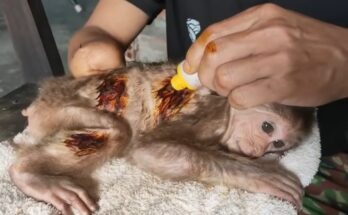Deep in the savannas of Tanzania lives one of the last true hunter-gatherer tribes in the world—the Hadzabe people. They live close to nature, relying on traditional hunting and foraging techniques passed down through countless generations. Among their many food sources, monkeys—especially the “sao” monkey, a small primate native to the region—are occasionally hunted for sustenance.
To the Hadzabe, the sao monkey is not just food; it represents survival, skill, and the wisdom of their ancestors. When a hunt is successful, the community comes together to prepare the meal. The monkey is cooked over an open flame, its skin crisping and meat roasting slowly, filling the air with a rich, smoky aroma. The process is simple but deeply rooted in tradition. No spices, no sauces—just fire, patience, and the hands of experienced hunters.
To an outsider, the idea might seem unfamiliar or even shocking. But to the Hadzabe, it is a normal, respectful way of life. They use every part of the animal, wasting nothing. As the monkey roasts, its scent grows stronger, making mouths water. Children gather close, eyes wide, eager for the first bites. The elders carve the meat and share it evenly, a sign of unity and respect within the tribe.
When they eat, there’s laughter, conversation, and satisfaction. The monkey meat, dark and slightly gamey, is enjoyed with wild tubers and honey gathered earlier that day. For the Hadzabe, this isn’t just a meal—it’s a celebration of life, nature, and connection.
To watch them eat is to witness a bond with the land that most have long forgotten. And to them, yes—the sao monkey, cooked fresh over fire, truly does look so delicious.


